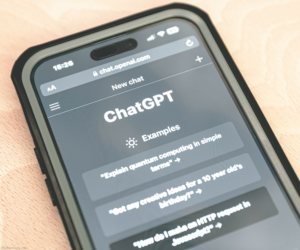Another possible application of LLMs is in responding to patient emails or MyChart messages. This can decrease the time spent formulating responses by incorporating information into cohesive explanations. Of note, patient information and data protected by the Health Insurance Portability and Accountability Act of 1996 (HIPAA) should not be put into LLMs. More on this later.
LLMs can improve communication between physicians and patients who do not speak English. LLMs can translate handouts, MyChart messages and email correspondence into patients’ native languages. This can lead to more transparent and more effective communication, allowing physicians to better respond to the needs of their patients and reducing errors.
Could LLMs aid clinicians in writing prior authorizations? While LLMs provide excellent summaries and rough drafts for clinicians, rheumatologists and rheumatology professionals must carefully review and refine the content. Prior authorizations often require detailed and specific patient information that LLMs may not provide. The final responsibility and liability still fall on the physician, who must ensure the accuracy and completeness of any prior authorization request.
Doximity recently released DocsGPT.com, which integrates ChatGPT with Doximity to help “cut the scut,” as advertised. When ChatGPT was first released, some touted it as able to cite literature. We warn against using ChatGPT for this purpose because it has been known to fabricate sources, a result known as “hallucinating.”4 DocsGPT tries to address this issue by warning the user to edit for accuracy before sending and by including parentheses for relevant information the physician should insert. 
Another application for LLMs would be as an add-on in the electronic health record. It could summarize patient health information to allow physicians to more easily review a patient’s chart. Simple queries, such as “What is this patient’s rheumatology history?” would include a list of diagnoses, laboratory values and previously prescribed medications.
Additionally, LLMs could assist physicians during patient visits by suggesting additional laboratories, imaging tests and medications associated with the patient’s condition. In the future, LLMs may play a more significant role in diagnosing and analyzing a patient’s profile to suggest appropriate medications. This will augment the physician’s clinical decision making, not replace it.
Nuance recently launched DAX Express combined with OpenAI’s GPT-4, which is advertised as being able to listen to audio from a patient encounter and generate a note.5 This is part of an ongoing effort to reduce physicians’ workloads. Moreover, it may restore the human connection in medicine and strengthen the physician-patient relationship. For example, it will allow the physician to maintain eye contact with a patient in lieu of looking at a computer screen, thus, creating a more patient-centered atmosphere.


